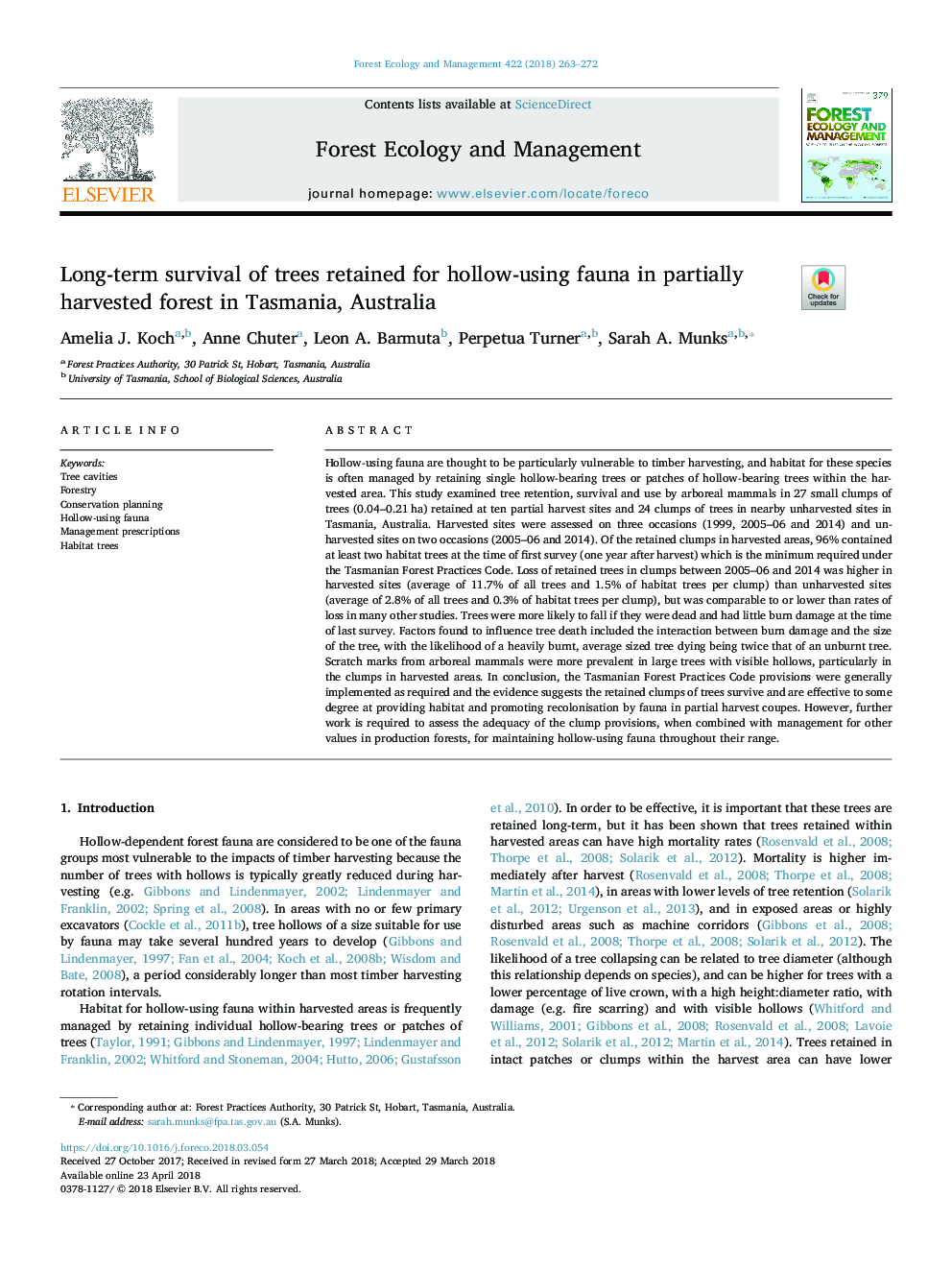| کد مقاله | کد نشریه | سال انتشار | مقاله انگلیسی | نسخه تمام متن |
|---|---|---|---|---|
| 6541672 | 1421338 | 2018 | 10 صفحه PDF | دانلود رایگان |
عنوان انگلیسی مقاله ISI
Long-term survival of trees retained for hollow-using fauna in partially harvested forest in Tasmania, Australia
ترجمه فارسی عنوان
بقای بلند مدت درختان که برای فاول های توخالی استفاده می شود در جنگل های کمی در تاسمانی، استرالیا
دانلود مقاله + سفارش ترجمه
دانلود مقاله ISI انگلیسی
رایگان برای ایرانیان
کلمات کلیدی
حفره های درختی، جنگلداری، برنامه ریزی حفاظت، فون با استفاده از توخالی، دستورالعمل های مدیریت، درختان زیستگاه،
موضوعات مرتبط
علوم زیستی و بیوفناوری
علوم کشاورزی و بیولوژیک
بوم شناسی، تکامل، رفتار و سامانه شناسی
چکیده انگلیسی
Hollow-using fauna are thought to be particularly vulnerable to timber harvesting, and habitat for these species is often managed by retaining single hollow-bearing trees or patches of hollow-bearing trees within the harvested area. This study examined tree retention, survival and use by arboreal mammals in 27 small clumps of trees (0.04-0.21â¯ha) retained at ten partial harvest sites and 24 clumps of trees in nearby unharvested sites in Tasmania, Australia. Harvested sites were assessed on three occasions (1999, 2005-06 and 2014) and unharvested sites on two occasions (2005-06 and 2014). Of the retained clumps in harvested areas, 96% contained at least two habitat trees at the time of first survey (one year after harvest) which is the minimum required under the Tasmanian Forest Practices Code. Loss of retained trees in clumps between 2005-06 and 2014 was higher in harvested sites (average of 11.7% of all trees and 1.5% of habitat trees per clump) than unharvested sites (average of 2.8% of all trees and 0.3% of habitat trees per clump), but was comparable to or lower than rates of loss in many other studies. Trees were more likely to fall if they were dead and had little burn damage at the time of last survey. Factors found to influence tree death included the interaction between burn damage and the size of the tree, with the likelihood of a heavily burnt, average sized tree dying being twice that of an unburnt tree. Scratch marks from arboreal mammals were more prevalent in large trees with visible hollows, particularly in the clumps in harvested areas. In conclusion, the Tasmanian Forest Practices Code provisions were generally implemented as required and the evidence suggests the retained clumps of trees survive and are effective to some degree at providing habitat and promoting recolonisation by fauna in partial harvest coupes. However, further work is required to assess the adequacy of the clump provisions, when combined with management for other values in production forests, for maintaining hollow-using fauna throughout their range.
ناشر
Database: Elsevier - ScienceDirect (ساینس دایرکت)
Journal: Forest Ecology and Management - Volume 422, 15 August 2018, Pages 263-272
Journal: Forest Ecology and Management - Volume 422, 15 August 2018, Pages 263-272
نویسندگان
Amelia J. Koch, Anne Chuter, Leon A. Barmuta, Perpetua Turner, Sarah A. Munks,
